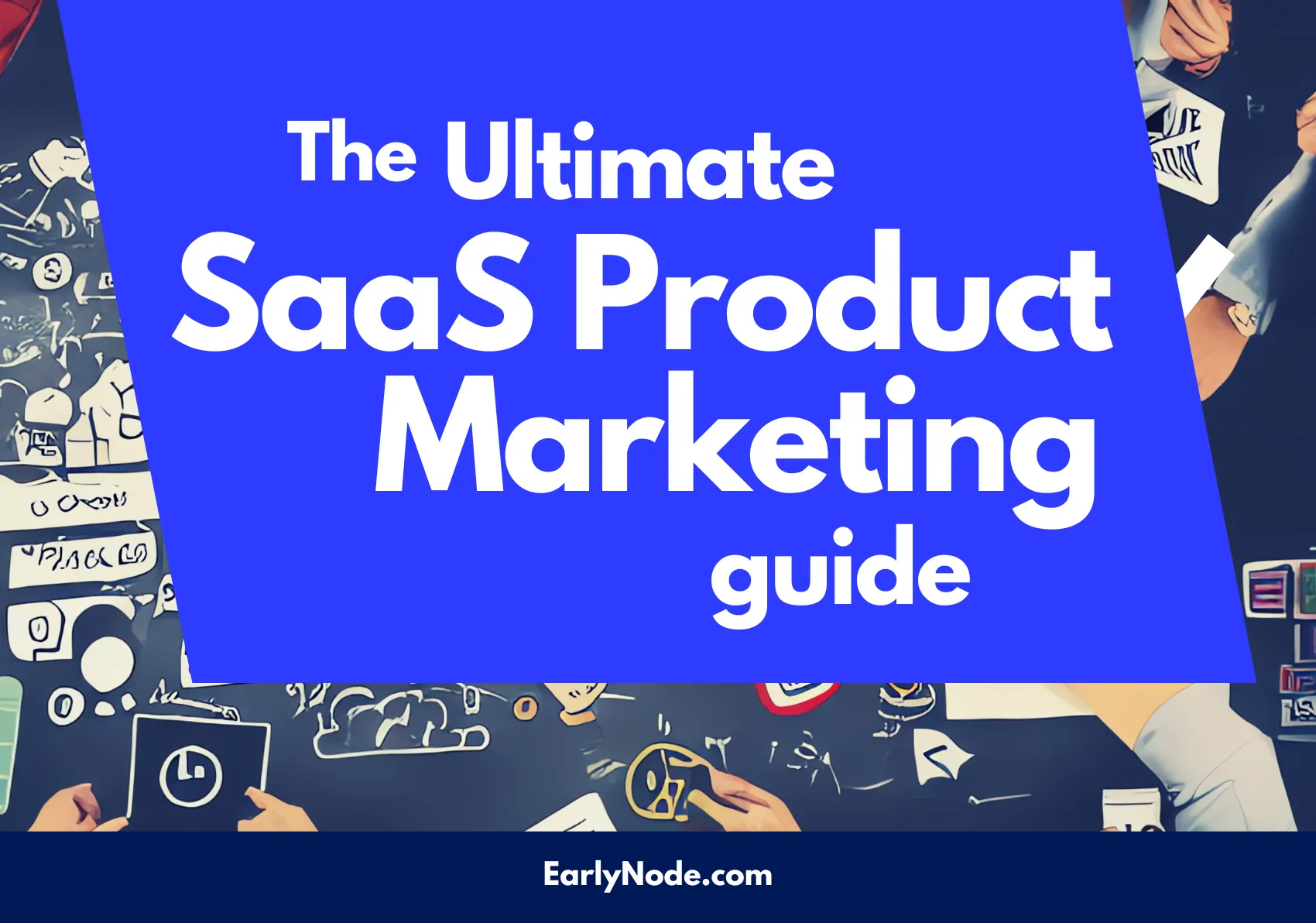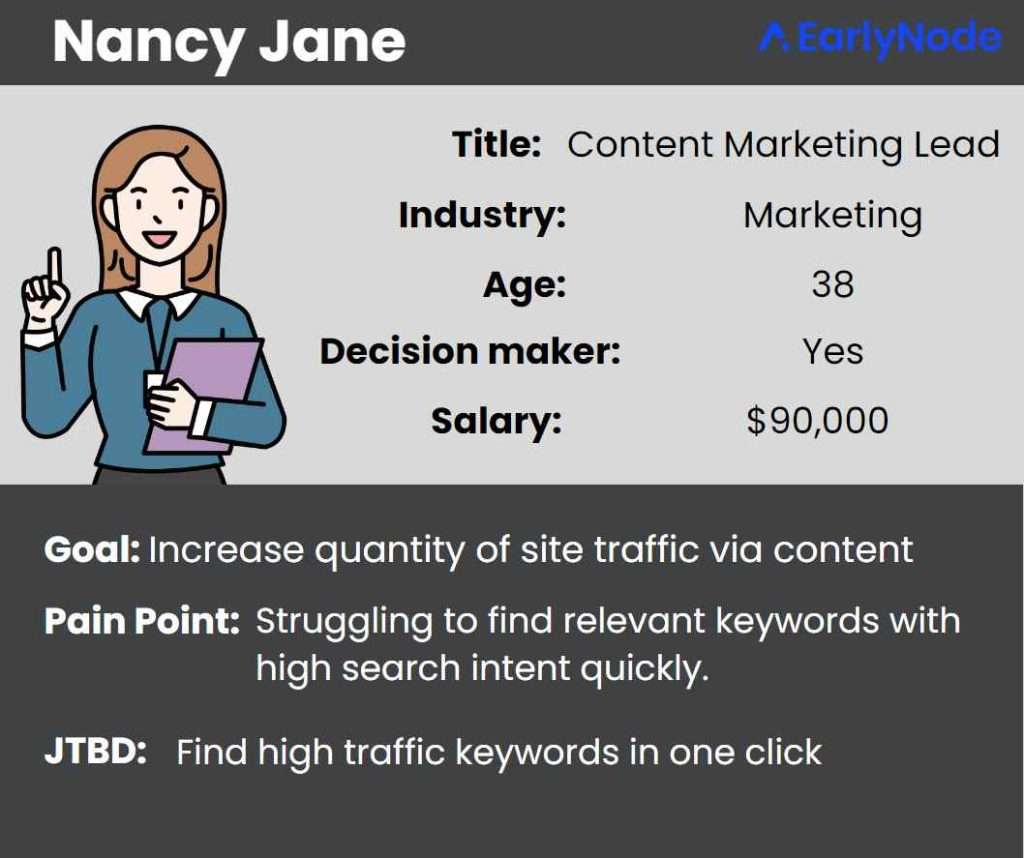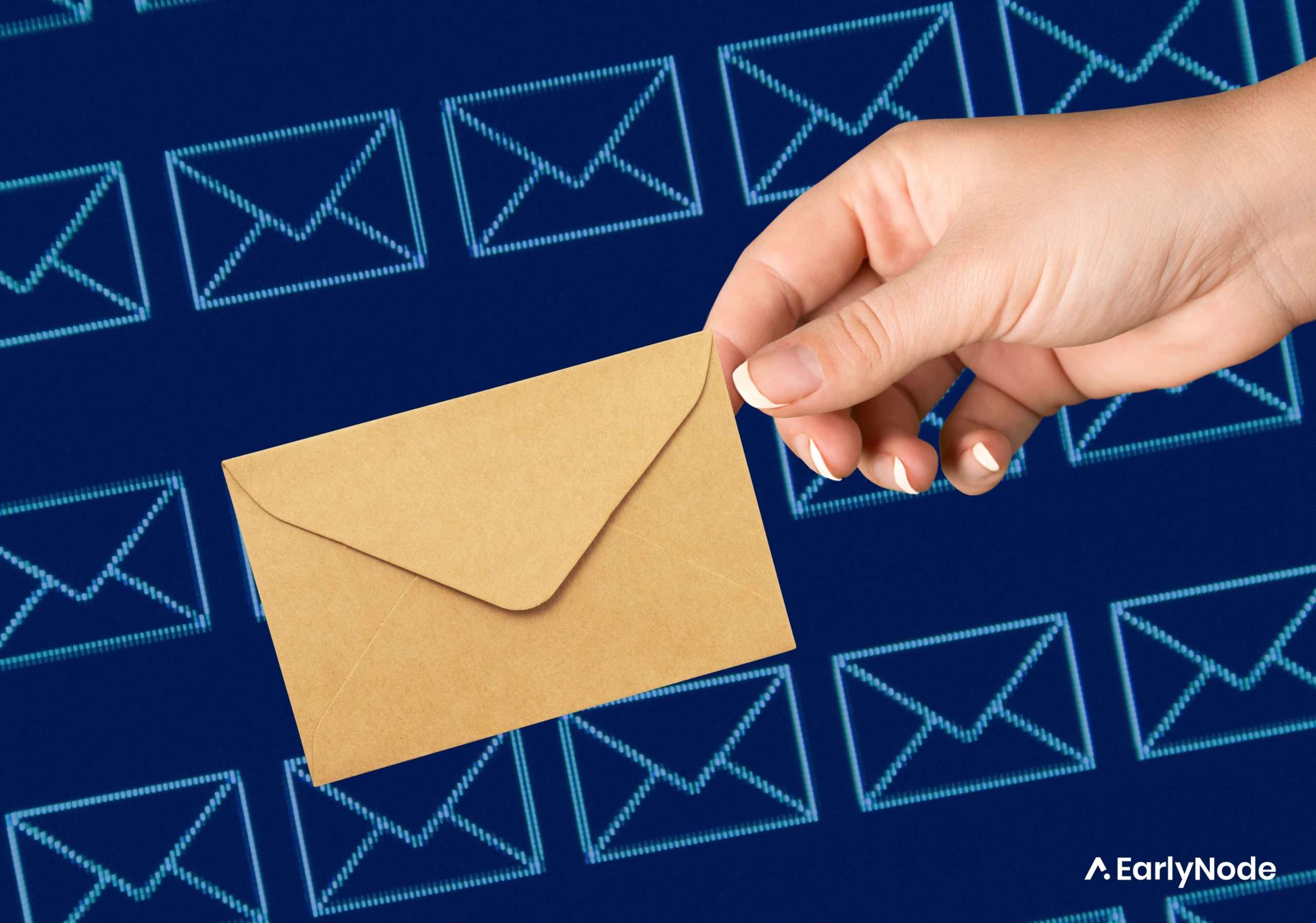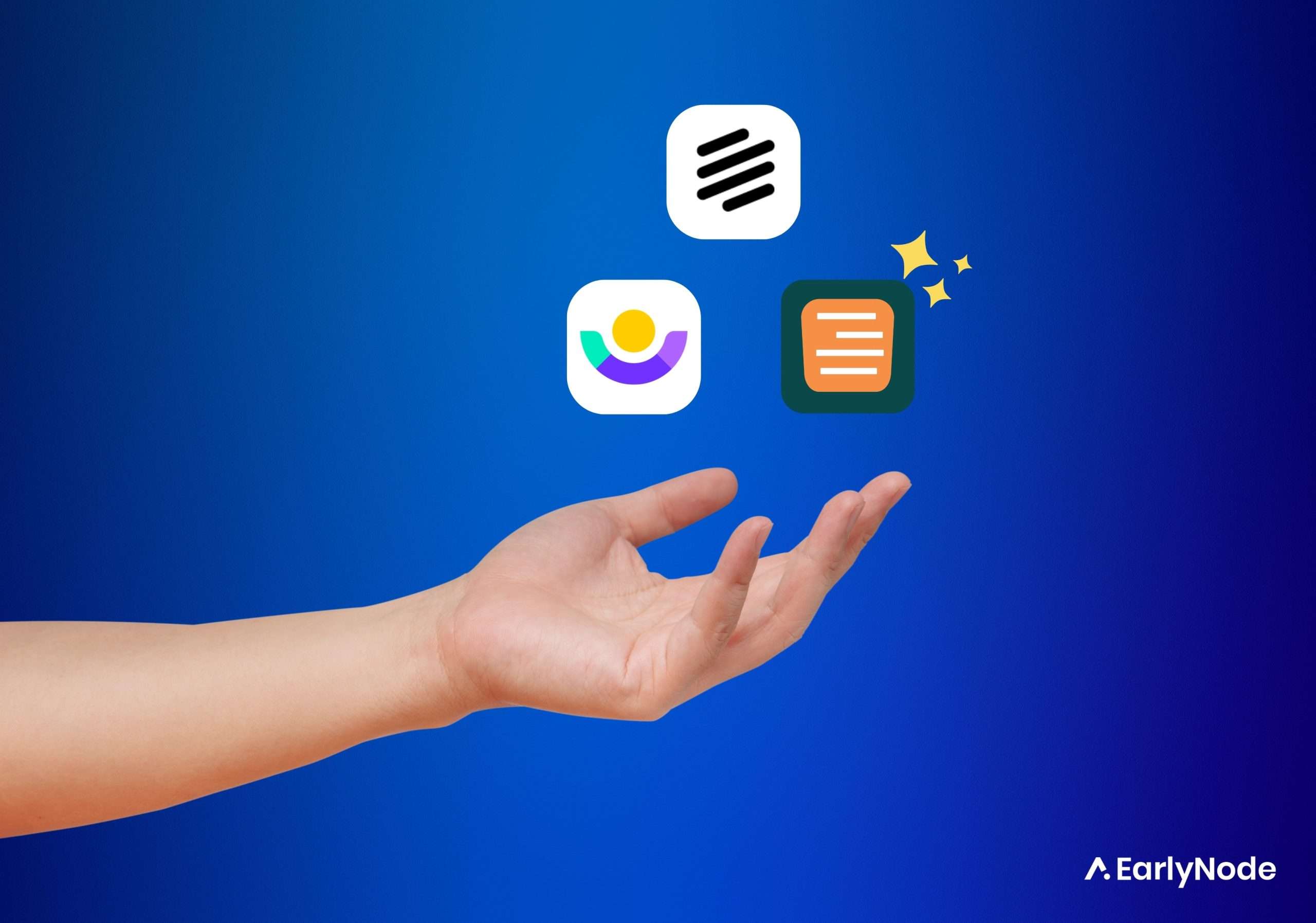The Ultimate Guide To SaaS Product Marketing

Product marketing has developed into a crucial role in SaaS, but many startups struggle to define what it actually is or what role a Product Marketing Manager (PMM) plays.
Some confuse it with general marketing; others think it’s just product management on steroids. This guide will put your mind at ease and help you develop your own strategy to win customers to your product.
Table of Contents
- TL;DR
- What is SaaS product marketing?
- SaaS product marketing vs. traditional marketing
- The role of SaaS product marketing and how it fits within your company
- What should your SaaS product marketing team look like?
- What does a SaaS product marketing manager do?
- What does a SaaS product marketing strategy look like?
- Measuring the impact of SaaS product marketing with KPIs
- A simple product marketing automation strategy for SaaS
- SaaS product marketing case study
TL;DR
- SaaS product marketing is a function that brings together sales, marketing, customer success, and product management. It gets all product knowledge from the product team while also equipping sales, marketing, and customer support with the right materials so that they’re aligned.
- You can set KPIs to measure the performance of your product marketing efforts so you can focus your time and energy on what actually works. The AARRR framework is a popular way to do this.
- Ahrefs is our go-to product marketing case study for inspiration. They educate their users and prospects by showing them how to solve various jobs-to-be-done, the manual hard way or by using Ahrefs features.
What is SaaS product marketing?
Product marketing is simply a way of planning and doing marketing by leading with the product. It’s not just about getting the market to know about your product but an ongoing effort to understand, attract, and retain your customers.
We all know about Dave McClure’s AARRR “Pirate Metrics.” General marketing is mainly focused on driving awareness with top-of-funnel strategies to drive awareness. Product marketing focuses simultaneously on the other stages as well.

That’s why it’s the job of a company’s product marketing team to shape the product’s positioning and messaging and show how it’s different from its competitors so users keep using their product instead of going to competitors.
Because it’s concerned about the product’s success, product marketers go the extra mile to make sure the sales and marketing teams are aligned and speaking the same language when it comes to the product. The end game? Bagging those opportunities and sealing more deals.
We all know about Dave McClure’s AARRR “Pirate Metrics.” General marketing is mainly focused on driving awareness with top-of-funnel strategies to drive awareness. Product marketing focuses simultaneously on the other stages as well.
SaaS product marketing vs. traditional marketing
The difference between SaaS product marketing and the traditional marketing approach usually comes down to the focus on the buyer’s journey.
Traditional customers have a shorter and simpler journey from awareness to purchase. That’s why traditional marketing focuses on generating marketing-qualified leads (MQLs) for the sales team.
SaaS customers can decide to cancel their software subscriptions at the end of the month if they feel it no longer serves their purposes or if they want another option. That means aside from nurturing them through the awareness, consideration, trial, and purchase stages, product marketing teams have to do the extra work of onboarding, activating, and retaining those customers.
That’s not all. They’ll also work with Sales and Customer Success to give them the support they need to close deals or keep customers satisfied.
Let’s use Canva as an example:
Traditional marketing may involve launching social media campaigns, creating landing pages, or writing blogs to get prospects to sign up. Their job typically ends here.
The product marketer will continue to drive engagement with users inside the app or off it via regular emails or blogs. His goal is to make sure users keep getting value out of Canva. They’ll also try to get freemium users to upgrade to Canva Pro.
Where does the SaaS product marketing role fit in your company?

A unique aspect of product marketing is that it runs through every stage of the customer journey. Product marketing plays a role in the following:
- Carefully positioning the product’s value in its target market
- Educating potential customers
- Onboarding users
- Increasing user adoption
- Reducing customer churn
- Identifying opportunities for expansion
Larger SaaS organizations usually have a dedicated product marketing department that works closely with the Sales, Marketing, Customer Success, and Product Management teams. In small businesses and early-stage startups, it’s common for the product manager or marketer to handle product marketing.
Some companies make product marketing a part of the product management team. Others feel it’s a better fit for the marketing team. In the case of the first, the Product marketer acts as the bridge between the product team and customers – he learns about the product from the product team and communicates its value to the customer in a way they can understand.
Also, let your product marketing guys work with internal teams on product launches. Let them collaborate with your sales and marketing team to execute the GTM, differentiation, and even product pitch. Finally, product marketing can take care of whitepapers, blogs, and product copy.
What should your SaaS product marketing team look like?
Putting together a product marketing team will depend on the size and stage of your startup and the nature of your product. Usually, when SaaS businesses grow to a company size of between 50 – 100, they hire a dedicated product marketing manager (PMM). If you have the budget, an effective product marketing team would consist of the following roles:
- Product marketing manager
- Content marketer
- Researcher/data analysts
- Marketing strategist
What does a SaaS product marketing manager (PMM) do?
The product marketing manager’s responsibilities fall into 3 categories: pre-sign-up, onboarding, and account expansion. His roles include:
- Defining the product’s positioning and unique value proposition to drive signups.
- Continually onboarding users, keeping them engaged, and reducing churn.
- Communicating new updates and features to drive product usage.
- Driving customer expansion efforts via upselling, cross-selling, and other techniques.
- Conducting competitive analysis to capitalize on competitors’ weaknesses and gaps.
The first course of action for your PMM is to define the product’s positioning, messaging, and go-to-market (GTM) strategy. These will form the foundation of the entire product marketing plan, so you need to document these.
What does a SaaS product marketing strategy look like?
SaaS product marketing strategy can be divided into 2 phases of the customer journey: pre-signup and post-signup.
Pre-signup product marketing strategy
The pre-signup phase involves everything you have to do to get the product to market and acquire new customers. More specifically, in SaaS, you are looking to get trial users or booked demos.
Here are some useful concepts and tips when planning your strategy:
1. Product positioning
Product positioning defines how your product stands out in the market. Successful positioning communicates your product’s unique value to potential customers as the best solution to their needs.
Product positioning expert April Dunford puts it this way,
“Your positioning needs to be centered on the value that you alone can deliver for customers.”
To nail your positioning, it’s crucial to address a specific audience with a specific problem.
2. Countering competition
A good product marketing strategy will account for the various competitive threats that your product will face. These include both direct competitors and substitutes.
Direct competitors are SaaS businesses that offer a similar product to yours. For example, competitors Asana and Monday.com are both project management platforms that make it easier to organize projects and collaborate as a team.
Substitutes are alternative products from outside your niche or industry that can also solve the problem your product aims to solve. For example, a substitute for Asana or Monday.com would be a simple Trello board where you list your To-dos in a Kanban style, even though those tools are built for different purposes.
You need to know your competitors’ strengths and weaknesses to communicate how your product better meets the needs of your target audience.
3. Customer personas
Personas are fictional characters that represent your ideal customers based on everything you know about your best current customers. They help you know who you should target and what they need from your product. The information you need to create personas is:
- Demographics and psychographics
- The JTBD (jobs-to-be-done) i.e. the task your customer wants to achieve
- Pain points and frustrations in achieving the JTBD
- The benefits and value of your products in relation to alternatives

Once you’ve developed your personas, you can use them to inform your messaging strategy. You can test the messaging or features of your product with customers who match those personas and see how they respond.
4. Product marketing tactics and channels
When marketing your SaaS product, you have to use different tactics for different channels at different stages. Align your marketing efforts with where your potential customers are in the buying process.
For example, social media, content marketing, and SEO channels are great for the early stages of the customer journey.
Email marketing is also a cool way to keep our current and potential customers in the loop about your brand, like new features and upcoming events. For example, you can send discount offers via email to convert free users or start a newsletter to build a community around your product.
Retention emails can be used to engage existing customers with product walkthroughs, customer feedback opportunities, and feature updates.
Post-signup SaaS product marketing strategy
When it comes to post-signup product marketing, the goal is turning trial users into paying customers and keeping those paying customers happy while enticing them to upgrade to higher plans. You can do this by blending a smooth onboarding experience.
User onboarding
Create an effective onboarding experience for your users by communicating important, timely, and relevant messages to build customer loyalty, increase trial conversions, and improve user engagement. Onboarding your users is a continuous process even after they’ve been with you for some time. Here are some user onboarding best practices:
- Welcome Emails: Sending an email to a new user immediately after they sign up for your product can boost activation rates and help you make a good first impression.
- Walkthroughs: Product walkthroughs increase the chances of new users adopting more product features by spotlighting important features they didn’t really know about or misunderstood.
- FAQ & Guides: Providing customers with self-service resources such as FAQs and guides empowers them to take control of their own onboarding.
- In-app messaging: Interacting with your users through timely and relevant messages helps with customer retention.
- Customer success guidance: Users can request a call with your Customer Success team to help them make the most of your product.
Measuring the impact of SaaS product marketing with KPIs
At each stage of the user journey, you need to set KPIs to know how well you’re achieving your product marketing goals.
In SaaS, the AARRR framework is the most popular method used to track the performance of your product marketing efforts. It is a system for measuring and monitoring key metrics across different stages of the user journey. It stands for Acquisition, Activation, Retention, Referral, and Revenue.

Here are some important metrics or KPIs to track at each stage:
Pre-signup stage
Unique Visits = number of distinct people who visited your website.
Visitor-to-signup Rate = number of people who signed up for a trial from your website/app.
Acquisition stage
CAC (customer acquisition cost) = how much you spend on average to acquire a customer.
Free Trials or Demos Booked = number of free trials or demos booked over a set period directly as a result of your product marketing.
PQLs (product qualified leads) Generated = number of leads who experienced the product’s value through a free trial or freemium and have shown big buyer interest, aka, potential enterprise customers.
Activation stage
Activation Rate = how many of your new signups reached an activation milestone.
Average Time to Value = the average time it takes for a user to reach an activation milestone.
Retention stage
Customer Churn = percentage of customers who did not renew their subscription.
LTV (customer lifetime value) = how much revenue you earn from a customer over the lifetime of their relationship with you.
LTV/CAC Ratio = how much you earn from a customer compared to how much you spent to acquire them.
User Retention Rate = opposite of churn. The proportion of users you retained in a given time.
Referral stage
Net Promoter Score (NPS) = the proportion of customers who are likely to recommend your product to a friend or colleague, according to a survey.
Revenue stage:
Revenue Churn = amount of revenue lost due to canceled subscriptions.
MRR/ARR = amount of revenue generated based on the average number of users who continue their subscriptions.
Average Revenue Per User (ARPU) = how much revenue you get from a user per year, on average.

A simple product marketing automation strategy for SaaS
Imagine you’re getting 10-50 signups every day, and you have to send a welcome email to every new customer manually. It’s going to be hard to keep up without making an error. Automation can save you time and ensure you deliver a consistent experience to all users.
The primary purpose of marketing automation in the post-signup stage is to take your users from one stage of the customer journey to the next. Here are 5 things to do:
- Set clear goals: Know exactly what you want to achieve with the automation (e.g., increased activation, reduced churn, or improved retention).
- Map out the user journey: Rely on persona data to anticipate user behavior and customize your automation workflow.
- Identify tasks that need automation: These are usually the tasks you find yourself doing on repeat (signup emails, onboarding process, product updates, etc.)
- Choose the right tools: Consider the goal and the channel where you will interact with the user before deciding on the tools to use.
- Measure and improve: Define, measure, and track your metrics. Perform A/B tests to experiment with different experiences, then iterate.
SaaS product marketing automation tools
Once you’ve identified your goals and the channel you want to communicate through, it’s time to choose the right tools to automate repetitive tasks.
Here is a checklist of suitable automation tools for different tasks:
- Email: Mailchimp, Drip, ActiveCampaign
- Social media: Buffer, Hootsuite, SocialPilot
- Analytics: Hotjar, MixPanel
- CRM: Salesforce, Pipedrive, HubSpot
- User onboarding: Userpilot, Pendo.io, UserGuiding
SaaS product marketing case study
Here’s an amazing example of a business doing product marketing effectively.
Ahrefs: Integrates their product into their content marketing strategy
Ahrefs uses content marketing to educate its target audience on SEO best practices and other valuable topics on its YouTube channel and in its blog. But here’s the extra-smart move; almost every video and article demonstrates how users can use Ahrefs’ tools to solve their problems. In effect, you see the value of the product in action. They call it “product-led content.”
Here’s how you can do it too:
- Have an amazing product: The main thing is ensuring you have an incredible product. Make it so good users would be willing to recommend it to others. You probably already know this, but it would surprise you to know how many founders underrate this.
- Know your product really well. As a product marketer, you should know your product like the back of your hand. Be up to date with every new feature launched and familiarize yourself with every use case. Research new use cases for your features if you have to.
- Find topics your customers are searching for. Most of your potential customers will discover your content via search engines, YouTube, and social media (TikTok, LinkedIn, Instagram). If they’re searching for it, it means they’re interested in content around those topics, so focus on commonly searched topics to quickly gain their attention.
- Prioritize topics that let you showcase your product. You can do this by giving each topic a “business potential” score. The score indicates to what extent the topic gives you a natural opportunity to:
a) highlight your product’s features, and
b) present your product as the best solution to a problem. - Communicate through multiple channels. Ahrefs gives its product and feature updates as much visibility as possible. You will find their content on their blog, YouTube, social media, email newsletter, and even in their app! See the example below.

Now you know what makes a great SaaS product marketing strategy. It’s all about understanding your target user’s problems and pain points, demonstrating how your product solves them in an engaging, personalized, and creative way, and continually giving them a memorable experience.
Bonus: What Does The Future Hold For SaaS Product Marketing?
The industry is constantly evolving, and while nothing stated here is new, we expect to see these 3 trends grow in the future:
- More personalized marketing: AI chatbots and machine learning will enable SaaS companies to deliver more personalized and relevant marketing messages to customers.
- Focus on a seamless customer experience: SaaS companies will work to create a unified and smooth experience across their website, product, and customer support to improve customer satisfaction and loyalty.
PLG will continue to lead the way: More companies will evolve their go-to-market strategy towards a bottom-up approach where the employees try the products, and the manager buys the software if employees like it.



